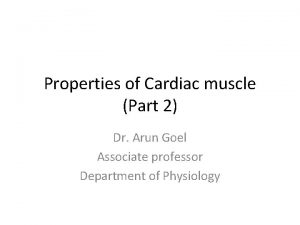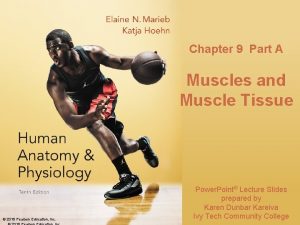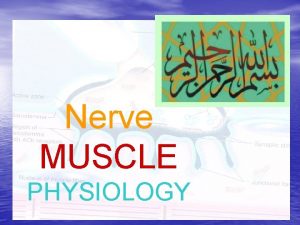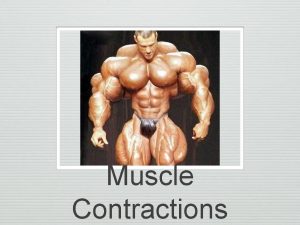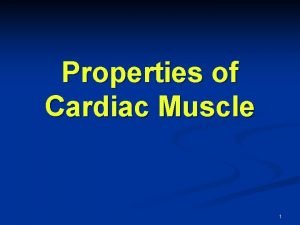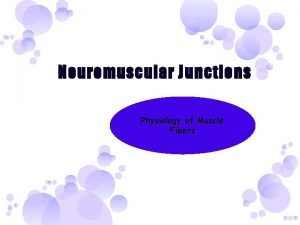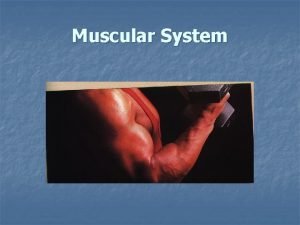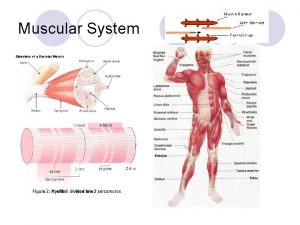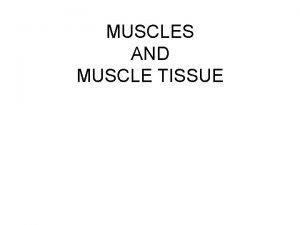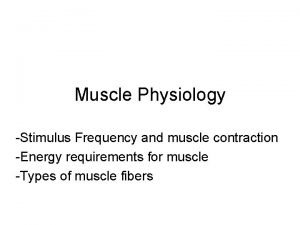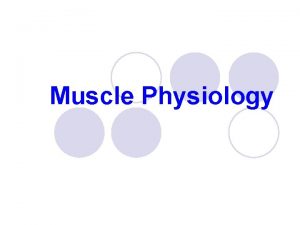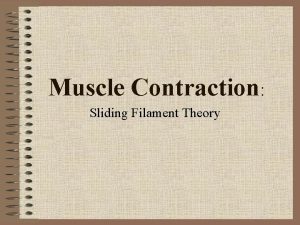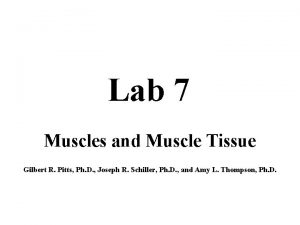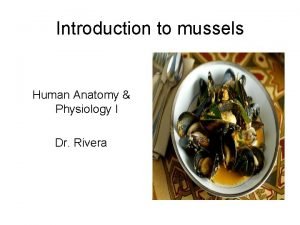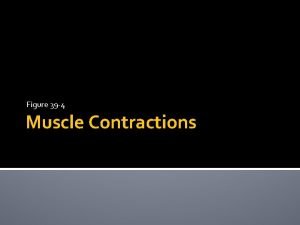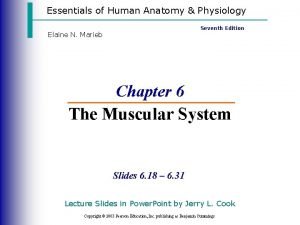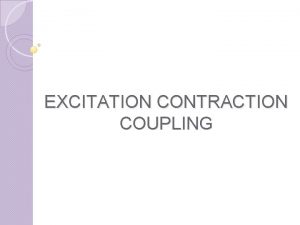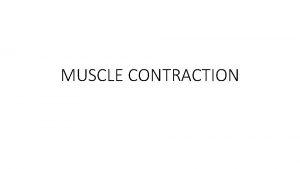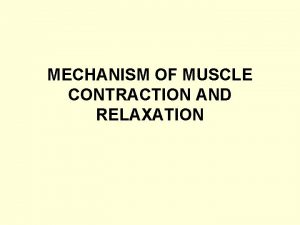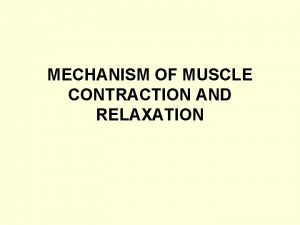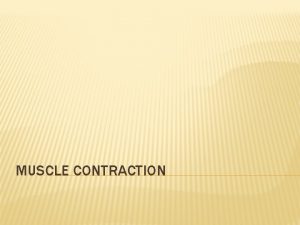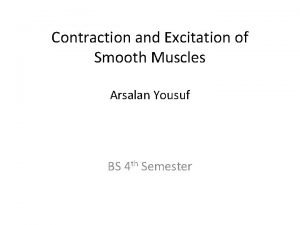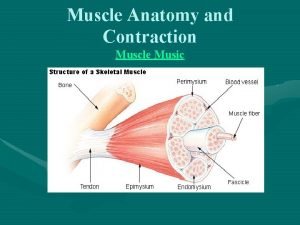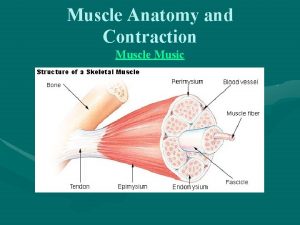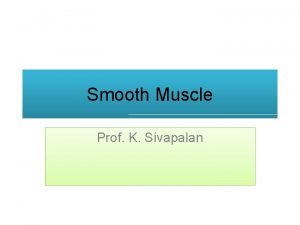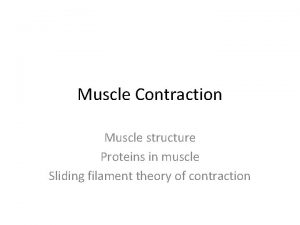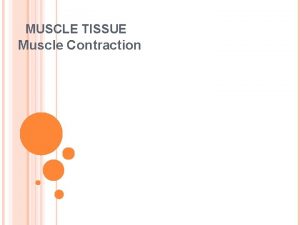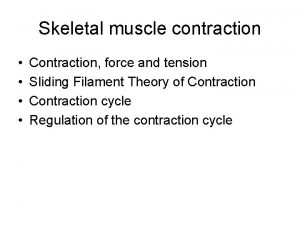Excitation and contraction of smooth muscle Smooth muscle
















- Slides: 16

Excitation and contraction of smooth muscle

Smooth muscle Important component of many organ systems: q 1. GI 2. Ureters, uterus 3. Respiratory system - bronchi 4. Blood vessels q Not under voluntary control. q Multiple ways of regulation of activity.

Types of smooth muscle q Multi-Unit q q ciliary muscle and iris muscle of the eye, piloerector muscle Unitary (syncytial or visceral)

Physical structure of smooth muscle Contractile unit similar as in skeletal muscle – but no such regularity. Sidepolar arrangement of myosin heads (in skeletal muscle bipolar) Dense bodies instead of Zdiscs.

Physical structure of smooth muscle Coupling of cells: q 1. dense bodies (physical) 2. gap junctions (electrochemical)

Regulation of contraction by Ca 2+ ions

Smooth muscle cross-bridge cycling q Cross-bridge cycle in smooth muscle is slower than in skeletal muscle. q Due to slower ATP-ase activity of myosin head.

Comparison of smooth muscle to skeletal muscle contraction Slow cycling of myosin bridges (1/10 to 1/100 of skeletal muscle). Fraction of time the cross-bridges remain attached to actin is long low energy requirement for contraction. Slowness of onset of contraction and relaxation (30 x longer than skeletal muscle). Maximum force of contraction greater than skeletal. “Latch” mechanism: sustained muscle contraction with little use of energy.

“Latch” mechanism

“Latch” mechanism

Control systems of smooth muscle

Regulation of contraction Contraction/relaxation can be elicited by: 1. Neural stimuli (autonomic nervous system) 2. Hormones (adrenalin, vasopresin, ACh, angiotensin, oxitocin, histamin) i local factors (p. O 2, p. CO 2, H+) 3. Mechanical stimulus (strech stress relaxation) 4. Spontanous rhythmicity (pacemaker)

Membrane potential and contraction

2+ Ca and contraction

2+ Ca and contraction q Smooth muscle contraction is dependent on extracellular Ca 2+ ion concentration q Cellular entry of extracellular Ca 2+ via: q 1. Opening of voltage-gated Ca 2+ channel (action potential) 2. Opening of ligand-gated Ca 2+ channel (no action potentials) Diffusion of Ca 2+ to all intracellular contractile proteins 50 x longer latent period than in skeletal muscle.

2+ Ca and contraction q Some smooth muscle cells have more developed SR. q Faster contraction after excitation.
 Smooth muscle cells
Smooth muscle cells Cardiac excitation-contraction coupling
Cardiac excitation-contraction coupling T tubule
T tubule Acetylcholine binding site
Acetylcholine binding site Muscle contraction
Muscle contraction Autorythmicity
Autorythmicity Sarcoplasmic reticulum
Sarcoplasmic reticulum 3 phases of muscle contraction
3 phases of muscle contraction Isotonic vs isometric contraction examples
Isotonic vs isometric contraction examples Treppe
Treppe Whole muscle contraction
Whole muscle contraction Incomplete tetanus muscle contraction
Incomplete tetanus muscle contraction Cross bridge theory
Cross bridge theory Muscle
Muscle Isotonic muscle contraction
Isotonic muscle contraction Muscle contraction animation mcgraw hill
Muscle contraction animation mcgraw hill Incomplete tetanus muscle contraction
Incomplete tetanus muscle contraction

